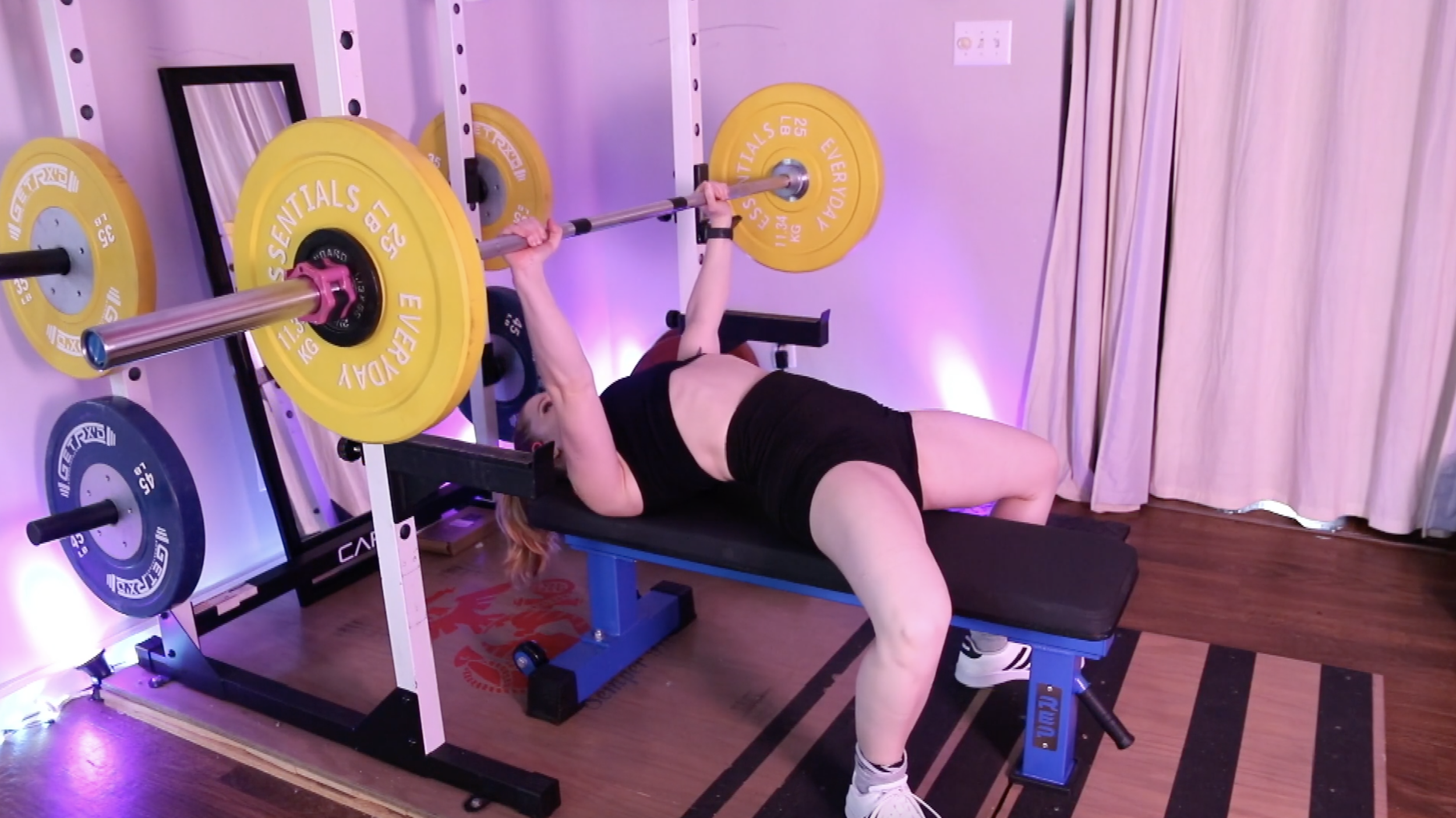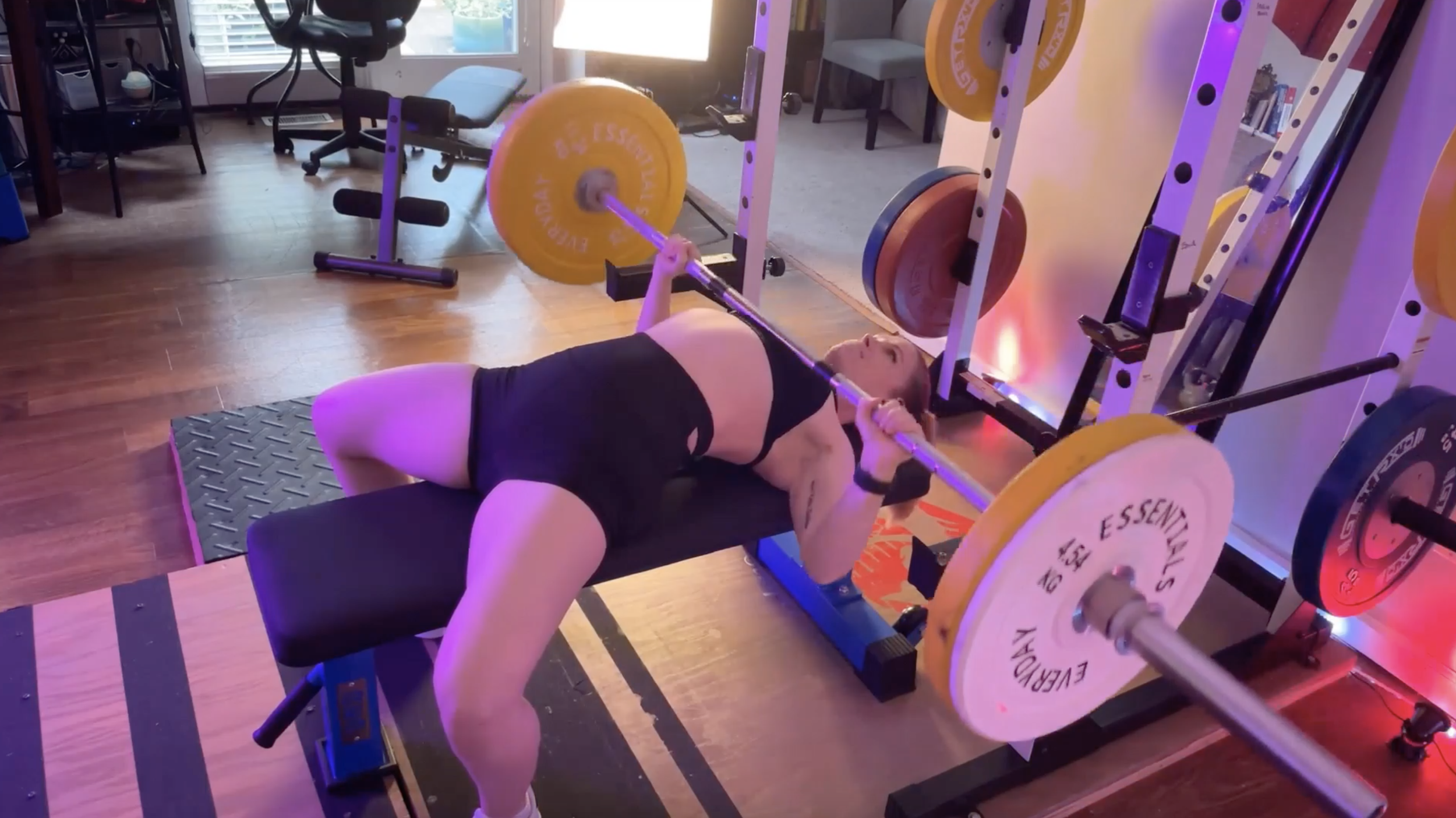Technique Tips: How to Bench Press
Read time: 7-8 minutes
If you want to have a strong upper body, bench press is one of the best exercises to train. This compound movement targets multiple muscle groups, including the pecs, delts, triceps as well as stabilizing muscles throughout your core and legs.
The bench press movement mimics various pushing actions that we do in everyday life. Having a strong bench can improve your ability to perform tasks like pushing objects, lifting heavy loads, and improving sports performance in activities like football, basketball, and wrestling.
Another reason that I love practicing and teaching the bench press is that it’s a damn fun lift–especially when you get up into heavier loads. Everyone I’ve taught bench press says the same thing: it feels empowering to move big weight.
Before you start loading up the bar with heavy weight, however, it’s important to take the time to master the technique of the bench press with lower weight and high-rep sets.
Let’s take a look at how to do the bench press with good technique. I’ll share with you some of the important cues that I give my clients to help them get all the pieces moving together.
First, let’s talk about which muscles are engaged and responsible for movement during the bench press exercise. By understanding the actions and functions of each muscle group, you can focus on engaging them properly during the bench press. This awareness enhances your mind-muscle connection, which will help you to lift more safely and effectively.
The prime movers of the bench press (i.e., the muscles that extend and contract) are the pecs, deltoids, and tricep:
Pectoralis major (pecs): The pectoralis major is the primary muscle targeted during the bench press. It consists of the clavicular (upper) and sternal (lower) heads. When activated, the pectoralis major is responsible for horizontal adduction, which brings the upper arm toward the midline of the body. It also assists in shoulder flexion, extension, and medial rotation.
Anterior deltoids (delts): The anterior deltoids, located at the front of the shoulders, assist the pectoralis major in shoulder flexion during the bench press. They help raise the arms up towards the starting position and provide stability during the movement.
Triceps brachii: The triceps brachii, a three-headed muscle at the back of the upper arms, are heavily engaged during the bench press. They extend the elbow joint, allowing for complete extension of the arms during the pressing phase of the exercise. The triceps are responsible for the lockout portion of the movement.
Many other muscles have to also engage isometrically (meaning they stay fired up without moving) to stabilize your body while you perform the bench press. For example, your lats, external shoulder rotators, and traps all have to stay engaged to stabilize your shoulders on the bench. Your glutes, erector spinae, hamstrings, and quads also have to fire up to keep your lower body stable. Essentially everything from the shoulders down needs to be engaged to help you stabilize while performing the bench press.
How to Do the Bench Press
Before doing bench press, make sure that to set up the equipment properly:
If you’re using a detached bench, place the bench perpendicular to the rack so that your head will be right under the bar on the rack.
If you’re using j-hooks, set them to the height of just below where your hands would reach with your arms extended up while laying flat on the bench.
Place the bar on the j-hooks (or on the rack at the height just below where your hands reach while lying on the bench).
Set up your safeties to the height that would catch the bar if you fail the lift and need to bail. If you don’t have safeties, make sure to have someone there to spot you.
Now that your equipment is set up, it’s time to get into position for doing the exercise:
Lay down on the bench face-up with your feet on the floor (either heels or balls of your feet).
Reach up and grab the bar where your hands are equal distance from the center of the bar (use the rings on the bar as a guide)
Engage the muscles all along the back of your body:
fire up your back and push your shoulders into the bench
squeeze your glutes (butt) and push your feet into the floor
engage your abdominals
push your chest up towards the ceiling
Take a deep breath and brace your core, then unrack the weight, bringing it to right above your shoulders with your arms straight.
5. Take another optional shallow breath and keep your core braced with all the muscles in your back fired up. Then bend your elbows to lower the weight towards your chest while you keep pushing your chest up towards the ceiling. Stop when the bar is touching your chest.
6. Drive through your legs, squeeze your glutes & back of your shoulders to push the weight back up to the starting position. Take a shallow breath and rebrace before doing another rep. Continue for the recommended number of reps in your training program.
Coaching Cues:
Pull the Bar to You: It’s important to engage your lats and the back of your shoulders to stabilize during this exercise. One thing that can help fire those muscles up is to think about pulling the bar to your chest on the descent. I suggest doing lat rows at a light weight before training bench press to prime this movement.
Leg Drive: Keep your legs pressing into the ground like you’re doing a bridge (I recommend doing bridges as priming exercises before bench for this reason).
Bend the Bar: To engage your external shoulder rotator muscles, think about bending the bar into a u-shape towards your feet.
Brace: If it is safe for you to do the valsalva maneuver, I recommend using it to brace and keep your body stable and rigid during this exercise. This involves holding your breath to create intra-abdominal pressure while the weight is in motion, and taking a breath between each rep or every couple of reps. This eliminates movement in the torso that naturally happens when we inhale and exhale–which can destabilize your base. The valsalva maneauver is not recommended for people with blood pressure problems, health conditions that make the eyes sensitive to pressure, or who are pregnant. For more info on this, check out the lesson on How to Breathe While Training.
For more tips on how to perform the bench press, check out the video below where I covered bench press during one of my Technique Tuesday live streams on Twitch:
Keep Practicing!
Initially, the bench press may appear challenging or slightly intimidating. But with consistent practice and attention to technique, this exercise can bring a lot of benefits to your overall development in resistance training.
Don’t forget that you can always reach out if you have any questions about whether or not you are practicing the form correctly. Send me a message in Trainerize if you’re a 1-on-1 client, or take a selfie video and post it in the Coaching Corner Discord #🏋-technique-reviews channel.
About Jayd Harrison
Jayd Harrison is a personal trainer and content creator. She helps people to build muscle, burn fat, and clean up their diets with her online coaching programs and social media content. Check out some of Jayd’s coaching videos on Youtube, or join Jayd live on Twitch and follow on social media:




